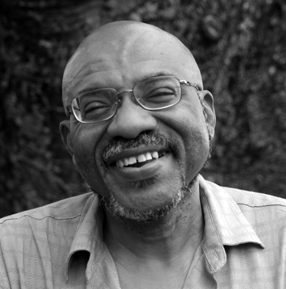New Year’s Eve in Addis
Addis is dark at night, as if the low grade
electricity cannot burn through the heavy gloom.
On New Year’s Eve, the shops are emptying,
the pavements are covered with the aromatic
green of cut grass, and women sell bundles
of the welcome carpets and dry firewood.
The smoke begins to thicken in the air –
from bonfires with a red glow at each house
and small dwelling. It is hard to breathe
so far up in the highlands; the air is being
purified – all sins, all errors, all wayward acts
burnt away by flame; the smoke clogs the nostrils
with the acrid reminder of failure. The penitents
will bathe in soft rainwater, cover their skin
with palms full of medicated powder, and the bodies
will be robed in gleaming white – the cloth of hope.
In the dim light of pre-dawn, the women follow
the antiphonal groans of the priests at St. Stephens –
the scent of incense can carry for miles in the cool
morning air. They arrive at the courtyard and begin
to press clean lips to the floor of the sanctuary,
to open clean palms and cup the blessings falling
from the crosses’ maze of lines. Like women
bathing in a river, they scoop the healing on their
heads, their voices muttering the Ge-ez of penitence
until they too can enter the holy place and bow.
The past must enter the blood as ritual – that which
remains is the gold and the precious silver of tradition –
and in this season we learn the theology of forgiveness,
the promise of forgetting all things – the amnesia
of the gospel. It is how a people could forget
the monument of the emperor; how, come Maskal,
the sins of a brutish summer can turn into smoke –
a burning in the eyes, some tears for a while
before the balm of weeping, the cleansing of prayer
and the ordinary rituals of facing new days.
The penitent does not make God; it is God who made
the penitent; it is not for us to know the answers;
questions are for those who have not yet learnt
the insignificance of the short time we are given here.
From Wheels, (Peepal Tree Press, 2011). Copyright © Kwame Dawes. Used with permission of the author

